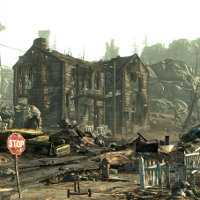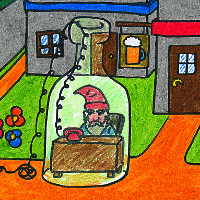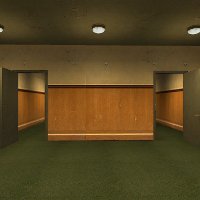I started playing Grand Theft Auto IV a few days ago. I uninstalled it today. Steam says I spent 16 hours playing, out of its assuredly fifty-plus hours of content. Many of those hours were spent paused while I was doing something else.
Nico Bellic was drawn to America by his cousin’s stories of wealth and comfort. A life without killing or pain, where things were easy and nothing hurt.
The main characters and relationships in the game are endearing in a dark way. The graphics were quite nice, especially when compared to the previous game in the series, GTA: San Andreas, which my wife is playing right now. The amount of detail in the city and the number of things one can do are amazing.
In reality, life in Liberty City was a struggle. It was the same cycle of steal, kill, flee as before, except in an unfamiliar place where everything is harder and everyone is a stranger. No respect and no opportunities. And always the need for money.
But the game isn’t interesting. The gameplay is the same as previous games, with clumsier driving and walking and slightly better shooting. The missions are more restrictive than ever. In GTA III, you could cleverly solve missions by blocking an escape route with a car or planting a bomb in a target’s truck. In most of GTAIV‘s missions, you must use this car and go here, and then the guy will escape in a cutscene that removes any obstacles, and then you must chase him across the city and he’s impossible to catch and then he flees on foot and you confront him in another cutscene. And if you screw up at any point, you need to start the mission over because we don’t have any checkpoints.
Nico slowly learned something about America. America had a vision of itself: rich, easy, luxurious. And it forced you to pursue that vision. Everyone pursued that vision. Even if you wanted to do something else, be someone else, you couldn’t. You needed money. And you had certain talents that were valued, even when you weren’t valued as a person.
This is one of those games where the developers have crafted this world and this game that they’re incredibly (and rightfully!) proud of, and then realize with dismay that some grubby player is going to get her grubby fingerprints all over it. So they do their damnedest to make sure the player can’t interfere with their lovely work. Any place that the player could screw up the game with her insistence on cleverness, they stop that shit.
And when you got money, it corrupted you. It hurt you. Money made you crazy, bought you drugs that tear you apart, got you in debt, got everything you love set on fire. You needed the money, but the money ruined you.
In the end, once I moved on to the game’s second safehouse, I gradually lost interest. The mission structure sprawls out and the characters are less interesting, and I became less invested in Nico Bellic’s “I’m a man full of guilt who wants a different life yet I don’t even blink when you tell me to kill folks” routine. I simply realized that I didn’t want to play any more. So I stopped.
And so Nico walked away. Got on a boat, a bus, a plane, and went somewhere else where he didn’t need to kill for money. Nico just stopped.


